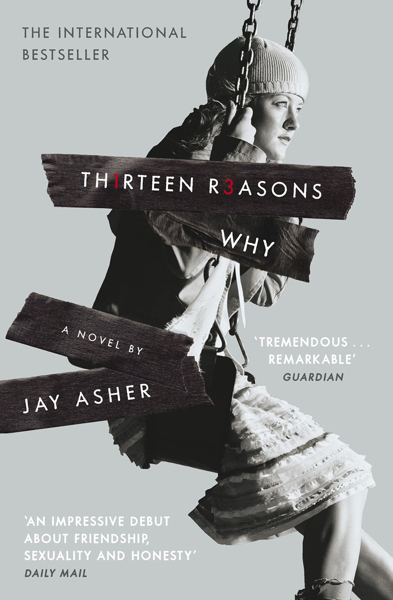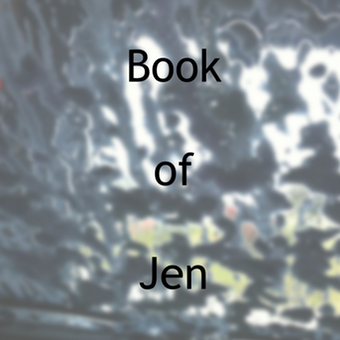
Thirteen Reasons Why is a story about a teenager named Hannah Baker who died from suicide. Before ending her life, she recorded a series of cassette tapes in which she explained some of what happened to her that influenced her decision. She arranged to have those tapes sent to the people who had hurt her.
This book was becoming popular at a time when I was working in a bookstore. Thirteen Reasons Why was located in the teen/young adult section.
There was a day when one of my managers pointed out Jay Asher to me as he stood in the teen/young adult aisle, counting the number of copies of his book that were on the shelf. To be clear, this is an extremely common thing for writers to do. He eventually noticed us, turned around, and waved hello before going back to counting books.
Years later, I found a hardcover autographed copy of the book in a thrift store. I live in a college town, and students who are moving back home for the summer tend to donate items that they don’t want to bring back home with them.
My best guess is that someone did not want their parents to find this book and assume that their offspring was considering suicide. My visit to the thrift store happened after Netflix launched a TV series based on the book. Some found the series to be controversial because it depicted Hannah’s way of ending her life in graphic detail. (Netflix later removed that scene.)
I have not watched the TV series that was based on the book. As such, this review is based entirely on the book itself
The majority of Thirteen Reasons Why comes to the reader from the viewpoint of Clay Jensen. He received a mysterious box on his front porch that was addressed to him. Inside was a series of cassette tapes. There was no return address on the box.
I’m not entirely certain what year the story takes place it, but it is clear that it is long after it was common for teenagers to record music on cassette tapes to share with a friend or with someone they were dating. We called them “mix tapes” back in the day.
Clay doesn’t have anything that he could play the tapes on. Fortunately, his father has what I would have called a “boombox” in the garage. It is here that Clay starts playing the tapes, becoming more and more nervous and upset the more he listen to them.
The instructions left by Hannah on the first tape include some warnings. If you received the box of tapes, it meant that you were on at least one of them. Those who find themselves on a tape are to listen to the rest before boxing up the tapes and mailing them to whoever is the focus of the tape after theirs.
Failure to send the box of tapes to the next person would result in having all of the tapes released publicly. If that happened, all of the bad deeds and secrets on the tapes would spread. That’s a really potent threat that ensured that the tapes would be passed on.
Clay “borrows” a Walkman – the kind that plays cassette tapes – from a friend (without the friend’s knowledge). He embarks on an extremely emotional and stressful journey listening to Hannah’s tapes while walking to different locations on a map that matches where the events of a specific tape happened.
The reader learns that Hannah made those maps herself and pushed them into the lockers of the people who she talked about on the tapes. Clay shoved the map into his backpack and was able to dig it out of there.
I thought it was really clever of Jay Asher to convey Hannah’s story via cassette tape. There is something really personal about listening to someone’s recorded voice. Having that voice on a cassette tape – a physical, tangible, object – increases the intensity of the shared audio moment.
Clay spends several hours focusing on the tapes. Which one was he on? What did he do that hurt Hannah? I could feel his anxiety and nauseousness as he listened to the tapes. What makes this even more dramatic is that Clay really liked Hannah, and they only had a brief moment together before she passed away.
The majority of the rest of the book comes to the reader from the viewpoint of Hannah. I found this very interesting because it gives her a voice and allows her to explain what she was thinking, and feeling, before she died. This can only happen in a fictional situation. In reality, people who lose a loved one to suicide are often left with more questions than answers.
Without going into “spoilers” I will say that it wasn’t one incident that caused Hannah to decide end her life. Instead, it was a snowball of bullying and bad situations that really hurt her. Thirteen reasons why, each one explained in great detail, on either the A or B side of a cassette tape.
While Clay is listening to the tapes, he starts making connections between what Hannah is describing and the confusing things that he saw happen in the months and days before she died. None of those situations made sense to him until after he listened to the tapes and heard Hannah’s side of the story.
According to Wikipedia, Thirteen Reasons Why was released in 2007, long after the days when teenagers listened to music on tapes (or CDs, for that matter). Today, people of all ages mostly listen to digital music, and to podcasts of a variety of topics, online.
It would be extremely difficult for a person who is a teenager today to follow in the fictional Hannah’s footsteps by recording their pain on a series of cassette tapes. To the best of my knowledge, stores don’t sell packages of cassette tapes anymore, or the Walkman or “boombox” to play the tapes on.
I think Jay Asher chose wisely when he decided to have Hannah tell her story through the cassette tapes. Doing so made a nice contrast between Hannah’s recorded voice and the voice in Clay’s head as he agonized about what the tapes would reveal. In addition, he picked a means of sending a note to those Hannah left behind that could not be easily imitated by the teens of today.
One big lesson that can be learned from stories like the one in Thirteen Reasons Why is valuable regardless of the age of the reader. Be kind. You cannot always know, for certain, what’s going through another person’s mind, or what is troubling them. A small moment of kindness can potentially make a big difference in the life of a person who is suffering.
There are resources for people who are thinking about suicide. The National Suicide Prevention Hotline provides free and confidential support for people in distress, twenty-four hours a day, and all seven days of the week. You can speak to someone in English or in Spanish. They also can connect with people who are deaf or hard of hearing.
Thirteen Reasons Why – by Jay Asher is a post written by Jen Thorpe on Book of Jen and is not allowed to be copied to other sites.
If you enjoyed this blog post please consider supporting me on Ko-fi. Thank you!

I skipped most of the post because I’ve had it in mind to read 13 Reasons Why for a long time and I didn’t want to spoil anything. I’m curious as to whether the title is a direct reference to My Life Story’s magnificent 90s song 12 Reasons Why, that’s one reason I wanted to read it, the other being I’ve heard it compared to Jennifer Niven’s wonderful “All The Bright Places”.
Anyway, thanks for reminding me I need to add it to my list.
Thank you for your comment, Bhagpuss!
In the back of the hardcover book I own, there is a “questions and answers” session. Nothing in there mentions the song by My Life Story. I’ve never read “All The Bright Places”, so I have no clue as to how these two books compare.
I tried to keep my review of “Thirteen Reasons Why” as spoiler-free as possible. That said, it is possible I unintentionally gave away something in my review. You were smart to skip most of it. If you end up reading the book, maybe come back and see how my review compares to your opinion of it.